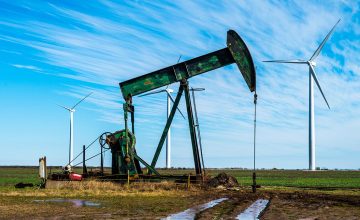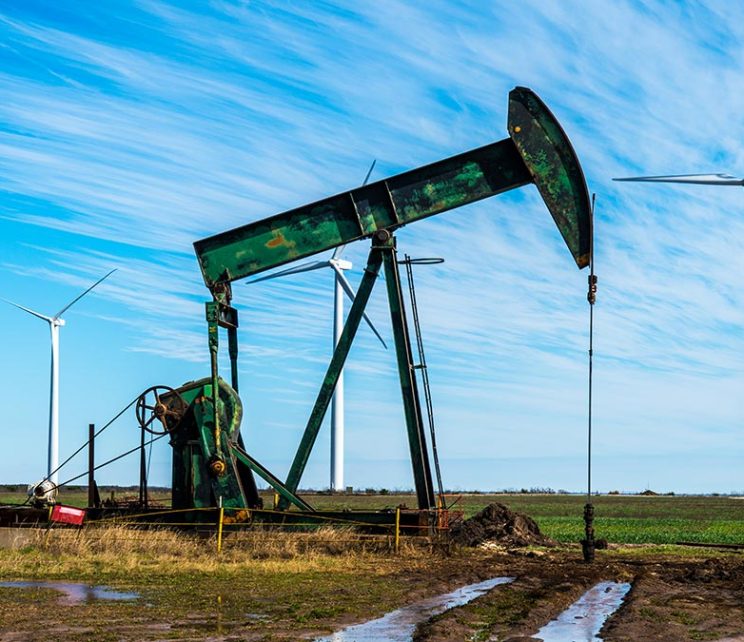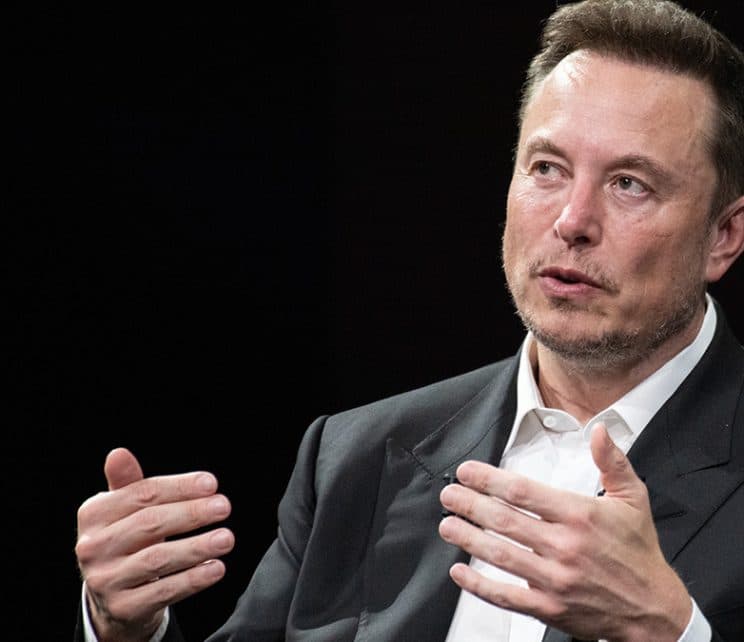
Mainstream Online Web Portal
LoginInvestors can view their accounts online via a secure web portal. After registering, you can access your account balances, periodical statements, tax statements, transaction histories and distribution statements / details.
Advisers will also have access to view their clients’ accounts online via the secure web portal.
The Point
Quick, actionable insights for investors
Responsible Investments

Impact investing: How inflation is creating sustainability opportunities
Higher commodity prices are triggering investor interest in companies that can recycle, process waste and optimise production to reduce costs.
That’s creating new opportunities for sustainable investors, says Tim Crockford, who leads Regnan’s Global Equity Impact Solutions fund.
Sustainable production and consumption is UN Sustainable Development Goal 12 which aims to reverse the 70 per cent growth in raw materials used in production between 2000 and 2017.
Higher inflation underpinned by soaring prices for energy, metals and food have put this UN goal at the centre of the global macroeconomic debate.
“There is obviously an environmental imperative there, but increasingly with the cost of inputs rising dramatically there is now a financial imperative,” says Tim. “It’s been a big area of focus for us in the last 18 months.”

Impact investing: why renewables are well-placed to solve Europe’s energy crisis
Quick view
Impact investing: why renewables are well-placed to solve Europe’s energy crisis
Europe is likely to accelerate renewables as a preferred energy solution over “bridge fuels” like gas, says Regnan’s Tim Crockford.
While the humanitarian crisis remains a priority, Europe is sweeping away bottlenecks to reduce dependence on Russian fossil fuels.
What does that mean for “freedom energy” as Germany’s finance minister calls renewables?
“While we’re likely to see a rise in short-term support for fossil fuels, that’s likely to be curtailed by supply and lead-time constraints,” says Tim.
Renewables can be operational sooner than new gas and nuclear capacity, bring countries in line with net zero commitments and are less likely to turn into stranded assets.
“It seems to us that renewables, hydrogen, battery storage and energy efficiency are poised to be the biggest winners.
“This is particularly true for small-scale solar and onshore wind, but even offshore wind has a theoretical lead time of only 18-24 months.” New European gasification infrastructure could take three-to-five years, Tim says.

FAST PODCAST: Will country-level ESG become more important after Ukraine?
Play podcastFAST PODCAST: Will country-level ESG become more important after Ukraine?
Will ESG have a bigger impact at country level after the corporate reaction to Russia’s invasion of Ukraine? ESG investing has two main aims, says Pendal ESG credit analyst Murray Ackman in our latest podcast. “One is about avoiding a financial loss or achieving an upside, and the other is about bringing about change.” Can investors bring about change in a country, for instance engaging with sovereign bond issuers? “You can have a lot of influence over businesses, but countries are a lot bigger and a lot harder to influence, though there have been examples such as South Africa. “The Russian example is a little idiosyncratic because there’s widespread sanctions and the speed and scale of condemnation in the west is very unique. “Very few businesses have applied the same standards to other countries that have invaded sovereign nations, though we can see the English Premier League is starting to question this in regard to Saudi Arabia and Yemen, so maybe this will change. “We’ve seen there is a re-setting of the status quo view, so perhaps this is a watershed moment on the way in which we invest in countries.”

Generational shift drives sustainable investing and ESG opportunity
Quick view
Generational shift drives sustainable investing and ESG opportunity
A Morgan Stanley survey recently found 99% of young US investors are interested in sustainable investing.
That doesn’t surprise Pendal’s Andrew Parry, who leads our sustainable investing business Regnan.
More than 40 per cent of advisers in Australia now offer responsible investment options, according to surveys by Wealth Insights.
That’s forecast to pass 50 per cent this year and 65 per cent in the next few years, driven partly by a demographic shift to younger investors.
“A vast amount of money is going to be inherited over the next 10 to 20 years,” says Andrew. “This is going to reshape demand for these products for many years to come.”
Still, most investors wrongly believe sustainable investing implies a trade-off that involves giving up returns, says Andrew.
“I think a better way to frame it is that if you’re not thinking about these issues, you can’t have the complete picture. Therefore you’re more likely to introduce more uncertainty by not having the full information when investing.”

Impact investing: the blood test that could screen early-stage cancers
Quick view
Impact investing: the blood test that could screen early-stage cancers
A blood test that can diagnose and monitor the progression of cancer and other diseases?
Liquid biopsy is just one emerging diagnostics innovation that Regnan’s impact investing team believes can enable a transition towards a more proactive and preventative healthcare model.
The procedure has its origins as far back as the 19th century when scientists first detected tumour cells in the bloodstream.
Now liquid biopsy is “the pinnacle of promise in clinical diagnostics,” says Maxine Wille, an analyst in Regnan’s Global Equity Impact Solutions team. Impact investing aims to generate both a financial return and a positive impact on society.
“It’s a non-invasive test. If the promise holds true it will not only help guide treatment decisions for insidious diseases like cancer but also might be used as a screening tool at a very early stage.”
“The promise is that you can now diagnose potentially up to 50 different types of cancers from a single blood draw — that’s why it’s very exciting and why we have decided to take an in-depth look at the sector,” she says.
The value of the liquid biopsy market ranges from $US20 billion to $US100 billion, Maxine says.

FAST PODCAST: How impact investing fits into portfolios this year
Play podcastFAST PODCAST: How impact investing fits into portfolios this year
Impact investors believe that making a difference makes money. Where does that fit into portfolios in 2022?
“We are finding more and more that investors of all shapes and sizes like the long-term view that impact investors take,” says Tim Crockford, in this fast podcast.
“They like the fact they can understand the themes that will ultimately drive the creation and growth of their capital over the long-term holding periods that impact investors typically take,” says Tim, who heads up Regnan’s equity impact team.
“More and more we see investors resonating with this longer-term view and seeing through the shorter-term noise and volatility that markets typically throw up.
“It means that as an investor I’m going to have to think a little bit more laterally than previously, where I might just compare to benchmarks. But over the longer term, it’s likely to outperform because it is at the beginning of its life cycle.”

It’s green, but is it a good investment? Here’s how to know
There are three things to consider when judging whether a green investment is also a good investment.
“Start by make sure what you’re considering is actually green”, says Maxime Le Floch, an analyst with Regnan’s Global Equity Impact Solutions team.
“These are very complex multi-dimensional issues and it’s not just about climate change. It’s also about ocean health, foods, wastewater and many other issues,” he says.
Second, focus on solutions with a strong relative advantage over competitors.
“It’s important to not just look at the environmental benefits of a technology but also how it performs relative to other technologies,” Maxime says.
Finally, focus on long-term opportunities.
“Investors should focus on areas where there are structural growth opportunities – offshore wind, wood-based fibres, water treatment solutions,” he says.

How Regnan investors are helping fight obesity
Quick view
How Regnan investors are helping fight obesity
Some 650 million adults are obese (1.9 billion are classed as overweight) and about 4 million die of obesity each year.
But anti-obesity medication is almost non-existent. “It’s a new category,” says Maxime Le Floch, an analyst with Regnan’s impact investment team.
Now investors in Regnan’s Global Equity Impact Solutions fund can say they are helping develop a solution.
Regnan is an investor in Danish diabetes pioneer Novo Nordisk, which is “the poster child for finding a really strong solution that’s miles ahead of competitors in a fast-growing market,” says Maxime.
Novo Nordisk launched its new Wegovy injectable anti-obesity drug in the US last June and expects to launch in Europe later this year.
“Novo Nordisk is investing in clinical trials to prove further the benefits of its treatment, says Maxime.
“It could end up in a new market where there aren’t many solutions and there is a massive opportunity.”

Three big questions facing ESG investors (and how to answer them)
Quick view
Three big questions facing ESG investors (and how to answer them)
Sustainable investor Regnan continues to strongly believe that including ESG criteria in the investing process provides information to make better investment decisions.
The challenge is, the more it evolves, the more complicated it becomes for investors trying to judge the effect of these criteria on their investments.
In a new article, Regnan senior ESG and impact analyst Murray Ackman outlines the three big questions facing investors:
- ESG data providers often have different views and methodologies for rating different companies. That means ESG requires more interpretation than, for example, credit ratings
- A lack of standard language and ESG definitions means it’s sometimes difficult to compare apples with apples
- It’s not always clear if or how ESG is actually affecting an investment
While there is progress in solving these chellenges, these questions still require deep expertise.
Advisers also need to be able to help clients work out their own ESG needs.

Murray Ackman: Ignore the billionaires – diversity, equity and inclusion are good for investors
Quick view
Murray Ackman: Ignore the billionaires – diversity, equity and inclusion are good for investors
US billionaires seem to be picking fights with big brands and civil rights groups over whether corporate diversity, equity and inclusion (DEI) policies are a negative.
Tesla’s Elon Musk, hedge fund manager Bill Ackman and Lululemon founder Chip Wilson have recently criticised DEI as discriminatory or even responsible for aircraft malfunctions.
“DEI must DIE,” said Musk on his X social network. Does he have a point?
It is true that many businesses think about DEI in a flawed way, writes Pendal ESG credit analyst Murray Ackman.
For example, DEI policies often focus on the needs of minority groups, while majorities are not always adequately considered.
“Organisational settings should allow all talent to flourish – including ‘majority talent’,” says Murray.
But there are plenty of studies – including from Pereptual’s Regnan sustainable investing business – suggesting DEI can drive business outperformance. And it is still a good indicator of how well a company is managing risk.

New guidelines warn investors away from ‘nature-negative’ companies
Quick view
New guidelines warn investors away from ‘nature-negative’ companies
More than half of global GDP depends on natural resources – and these days investors are well aware of biodiversity risk when making portfolio decisions.
Now a group of companies representing sectors exposed to the impact of nature loss is guiding investors away from what they call “nature-negative outcomes” towards “nature-positive outcomes”.
The Australian-backed Taskforce on Nature-related Financial Disclosures is made up of 40 organisations in agribusiness, the blue economy, food and beverage, mining, construction and infrastructure.
Last month, the taskforce issued a set of guidelines which aims to integrate nature into decision-making and give organisations a complete picture of their environmental risks, says Pendal ESG credit analyst Murray Ackman.
“Biodiversity should be considered in managing business risks, and also in terms of system-wide risks,” says Murray. “It can be seen as a proxy for resilience.
“Companies that have an understanding of their biodiversity risk are more likely to have a multi-faceted understanding of all their risks.”

Why ‘true’ social bonds are in short supply
Quick view
Why ‘true’ social bonds are in short supply
Most social bonds investors have the same aim: to make money while making a positive difference in society.
An example is the National Housing Finance and Investment Corporation, which last year issued $200 million in social bonds, making returns for investors while providing cheap funding for social and affordable homes.
But not all social bonds are equal when it comes to use of proceeds, cautions Murray Ackman, a credit ESG analyst with Pendal’s income and fixed interest team.
Pendal takes a relatively refined view, focusing on social bonds where the proceeds benefit the underprivileged.
Social bonds “don’t always meet our criteria”, says Ackman.
“For example, in the Netherlands around 70 per cent of the population is eligible for social housing. So, a Dutch Housing Authority ‘social bond’ isn’t going to fit our criteria.
“Our view is that a social bond should be an instrument to serve the underprivileged in society.”
Loading posts...
Loading posts...














